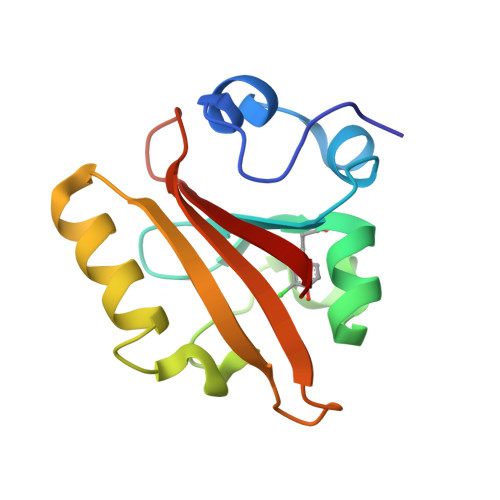Perturbation of Short Hydrogen Bonds in Photoactive Yellow Protein via Noncanonical Amino Acid Incorporation.
Thomson, B., Both, J., Wu, Y., Parrish, R.M., Martinez, T.J., Boxer, S.G.(2019) J Phys Chem B 123: 4844-4849
- PubMed: 31117606
- DOI: https://doi.org/10.1021/acs.jpcb.9b01571
- Primary Citation of Related Structures:
6MHI, 6MHN, 6MKT, 6MMD - PubMed Abstract:
Photoactive yellow protein (PYP) is a small photoreceptor protein that has two unusually short hydrogen bonds between the deprotonated p-coumaric acid chromophore and two amino acids, a tyrosine and a glutamic acid. This has led to considerable debate as to whether the glutamic acid-chromophore hydrogen bond is a low barrier hydrogen bond, with conflicting results in the literature. We have modified the p K a of the tyrosine by amber suppression and of the chromophore by chemical substitution. X-ray crystal structures of these modified proteins are nearly identical to the wild-type protein, so the heavy atom distance between proton donor and acceptor is maintained, even though these modifications change the relative proton affinity between donor and acceptor. Despite a considerable change in relative proton affinity, the NMR chemical shifts of the hydrogen-bonded protons are only moderately affected. QM/MM calculations were used to explore the protons' potential energy surface and connect the calculated proton position with empirically measured proton chemical shifts. The results are inconsistent with a low barrier hydrogen bond but in all cases are consistent with a localized proton, suggesting an ionic hydrogen bond rather than a low barrier hydrogen bond.
Organizational Affiliation:
Department of Chemistry , Stanford University , Stanford , California 94305 , United States.
















